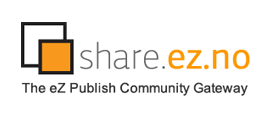Lots of Websites, One eZ Publish Installation - Adding Siteaccesses in eZ Publish
Thursday 27 May 2010 8:36:44 am
What Is a Siteaccess, Anyway?
Each siteaccess isn't exactly a different website, though it can certainly create that effect. A siteaccess has two main elements:
- a specific set of configuration files used for it alone, and
- a way of using it, by specifying it in the URL.
Let's say you already have an eZ Publish installation. You're used to addressing the homepage as http://www.example.com/index.php/eng. The “eng” is your siteaccess. Perhaps you've rid yourself of the “eng” in your url by making it your default. Or instead of URI-based access, you've switched to host-based access, and the “www” specifies your siteaccess. Either way, the siteaccess is specified in your URL.
You already have a second siteaccess. When you log in to the admin interface, you use http://www.example.com/index.php/admin, or perhaps http://admin.example.com/index.php. In both cases, the siteaccess requested is “admin”.
At first glance you might have thought the admin interface is really a separate piece of software. But it's simply another siteaccess. In other words, it's just a way of accessing your installation by specifying a different set of configuration files. Remember—in eZ Publish, configuration files let you control everything you want, plus scores of things you had never even thought about. So one siteaccess can produce very different results from another.
For example, you could have different designs used, different language settings, or different extensions with different modules, workflows, datatypes, etc. Moreover, you can even specify that you want a different database used, so that none of the content or even class definitions would be shared.

